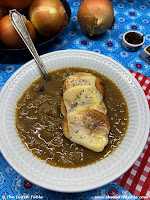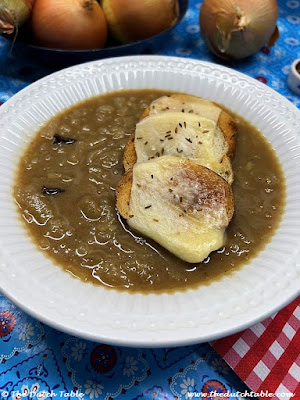There is this sweet memory I have from my early teenage years. Every day, my mom would have a hot pot of
Pickwick tea waiting for me when I got home from middle school. The fact that I made it home was a feat in itself: five miles one way, on my bike, with the wind in my face, I had to cycle from the house to a neighboring town, along a dark bicycle path, with tall, looming trees on both sides. It was always dark under those trees, no matter what time of day. Early mornings, and late afternoons when I returned, I always had that darn wind in my face, which made the 5 miles feel more like 10. Every push of the pedal with my stubby little legs was an effort, and all that kept me going was that golden pot of tea on the table, with a small tealight underneath it to keep it warm, and a plate of cookies. Not too many, mind you, just a few to enjoy while I drank my tea and made my homework, but that promise of comfort and warmth kept this 11 year old little girl cycling "through weather and wind", as we say.
Our household traditions are not unique, of course. About 40% of the Dutch drink on average about 3 cups of tea a day, adding up to well over 25 gallons a year. Not usually with milk, like our British neighbors do, but plain or sweetened with sugar, and usually served in a glass mug. Tea also prefers a different kind of cookie: because of the gentle flavor of the tea, we tend to go for lighter cookies that combine well and don't overwhelm the delicate tea taste. These cookies are not too heavy on the chocolate, or overly spiced or flavored, and are usually called "thee biscuitjes", tea cookies, where biscuit, or biskwie, refers to a hard-baked cookie. And if they dunk well, even better!
One of our tea cookie favorites are "kaneelbeschuitjes", cinnamon rusks, slender long crisp cookies with a delicious topping of sugar and cinnamon. Originally, the bakeries fabricated these cookies from leftover white bread - we're so frugal! Nowadays, these cookies are made from a sweet yeasted dough that is baked in a shallow, long shape and then sliced, sugared and baked again, in a warm oven. The word "beschuit" is from the Latin "bis coctus" and is related to the Italian word "biscotti" - twice baked.
I tend to make them the old-fashioned way, with leftover bread. I've found that those so-called Italian loaves are a great resource, but any unsliced white bread with a thin crust that you can find will do.
Because these Italian loaves are domed, I put a baking sheet and a heavy weight on top for 24 hours, to flatten the loaf down to approximately 1.5 inch (somewhere around 3 1/2 cm) tall. For the Italian loaves that I buy here, in the US, I need a ten pound bag of flour to bring down the weight. Start out with a lower weight for your loaf as it may not need as much, and slowly increase the weight if you notice resistance. If you put too much weight on it from the start, or if the loaf is very fresh, it might just flatten into a pancake and we will not be able to use it for these cinnamon rusks!
Kaneelbeschuitjes1 loaf Italian (or other white) bread, unsliced
3 tablespoons sugar
1.5 teaspoon ground cinnamon
1/2 cup milk
Slice the flattened loaf into 1/2 inch slices (approx. 1.5 cm) Reassemble the bread on a baking sheet, balance another baking sheet on top and place the whole thing in the oven on the warm setting, or up to 200F (about 95 to 100C). This will help to start drying out the bread a little bit and set its shape.
Pour the milk in a flat bowl, and mix the sugar and cinnamon in another. Dip each bread slice quickly with one side into the milk and then dip that wet part in the cinnamon sugar mixture. Place the bread slices on a parchment or silicone lined baking sheet, sugary side up.
When you've covered all the slices with sugar, put the sheet pan back into the oven for a minimum of 2 hours, but no longer than 4. Depending on how thick you sliced, or how long you dipped the bread, it might take a bit longer to get that typical rusk crunch.
One regular Italian loaf makes about 15 - 18 kaneelbeschuitjes.














































